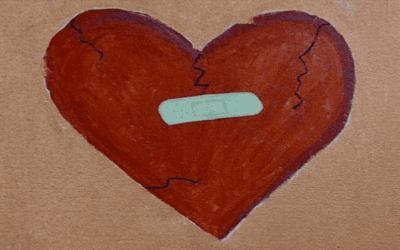
What is Lifespan Integration Therapy?
Lifespan Integration (LI) is a gentle, body-based therapeutic method that aims to heal without re-traumatizing. Developed by Peggy Pace, a clinical psychologist, LI is founded on the understanding that the mind-body system is equipped with a natural ability to heal itself, given the right conditions and support.
LI therapy works by helping clients to access and integrate unresolved traumatic memories and experiences that are believed to underlie many mental health issues. Unlike some other trauma-focused therapies, LI does not require the client to relive these experiences in detail. Instead, it uses a timeline approach, along with specific protocols and techniques, to gently reconnect neural pathways and promote healing on a deep, bodily level.
Book with a Lifespan Integration Therapist Here
Other Articles on Lifespan Integration
The Origins and Development of Lifespan Integration
Peggy Pace developed Lifespan Integration in 2002, drawing on her extensive experience as a therapist and her studies in neuroscience, attachment theory, and body-based therapies. She observed that many of her clients seemed to be “stuck” in patterns of emotional and behavioral reactivity that were rooted in early, pre-verbal experiences.
Pace began to experiment with using a timeline approach to help clients access and integrate these early experiences. She found that by guiding clients to visualize their life story, from birth to the present, while applying specific protocols and techniques, she could help them to reprogram their neural pathways and achieve lasting symptom relief.
Over time, Pace refined and expanded her approach, developing specific protocols for different types of trauma and mental health issues. She also began to train other therapists in LI, spreading the method to a wider audience.
Key Principles of Lifespan Integration
Lifespan Integration is based on several key principles that guide its approach to healing:
- The mind-body system has an innate capacity to heal itself, given the right support and conditions.
- Many mental health issues are rooted in unresolved traumatic experiences, often from early childhood, that have disrupted the normal integration of memory and emotion.
- By accessing and integrating these unresolved experiences, using a gentle, non-retraumatizing approach, the mind-body system can reprogram itself for health and resilience.
- The timeline is a powerful tool for accessing and integrating unresolved experiences, as it provides a container and context for the work.
- Specific protocols and techniques, applied in a systematic way, can help to facilitate the integration process and promote healing on a deep, neural level.
How Lifespan Integration Differs from Other Therapy Approaches
Lifespan Integration shares some commonalities with other trauma-focused and body-based therapies, such as EMDR, Somatic Experiencing, and Sensorimotor Psychotherapy. Like these approaches, LI aims to access and resolve the underlying bodily and emotional imprints of trauma, rather than just treating surface-level symptoms.
However, LI differs from these other approaches in several key ways:
- LI uses a timeline approach, guiding clients to access and integrate experiences across their entire lifespan, rather than focusing on a single traumatic event or time period.
- LI does not require the client to relive traumatic experiences in detail, or to verbalize their experiences extensively. Instead, it uses a more implicit, body-based approach to processing.
- LI uses specific, structured protocols and techniques, such as the Birth to Present protocol and the PTSD protocol, to guide the therapy process. These protocols provide a roadmap for the work and help to ensure that the processing is gradual, titrated, and non-retraumatizing.
- LI places a strong emphasis on integration, helping clients to link previously disconnected or dissociated experiences into a coherent, embodied narrative of their life story.
The Benefits of Lifespan Integration Therapy
Lifespan Integration has been found to be effective in treating a wide range of mental health issues, including:
- Post-traumatic stress disorder (PTSD)
- Complex trauma
- Attachment disorders
- Anxiety and panic disorders
- Depression
- Substance abuse and addictive behaviors
- Relationship issues
Clients who have undergone LI therapy often report a range of benefits, such as:
- Reduced symptoms of anxiety, depression, and PTSD
- Greater ability to regulate emotions and tolerate stress
- Improved self-esteem and sense of self-worth
- Enhanced capacity for connection and intimacy in relationships
- Increased resilience and ability to cope with life’s challenges
- Greater sense of integration, wholeness, and embodiment
While LI is not a panacea, and may not be suitable for everyone, it offers a powerful and promising approach to healing for many individuals struggling with the effects of trauma and adverse life experiences. As research continues to validate its efficacy and more therapists become trained in the method, LI is poised to become an increasingly important tool in the trauma treatment toolkit.
Book with a Lifespan Integration Therapist Here
Other Articles on Lifespan Integration
Bibliography
Balkus, K. S. (2012). Lifespan Integration effectiveness in traumatized women [Doctoral dissertation, Northcentral University]. ProQuest Dissertations and Theses Global.
Binet, E. P., Tarquinio, C., & Tarquinio, P. (2016). Lifespan Integration therapy for child sexual abuse: A qualitative analysis of the clients’ perception and experience of treatment. Journal of Child Sexual Abuse, 25(6), 614-634. https://doi.org/10.1080/10538712.2016.1191655
Hu, E., Gao, J., Rashid, R., Li, Z., & Ding, L. (2019). The effectiveness of Lifespan Integration therapy for PTSD: A case report. SAGE Open Medical Case Reports, 7, 2050313X19832647. https://doi.org/10.1177/2050313X19832647
Kaur, J. (2013). Lifespan Integration therapy with complex PTSD: A case study. International Journal of Psychotherapy, 17(1), 59-68. https://doi.org/10.36075/IJP.2013.17.1.59
Kwon, S., & Kim, S. (2021). The effectiveness of Lifespan Integration therapy on depressive symptoms and quality of life in patients with major depressive disorder. Journal of Affective Disorders, 282, 392-398. https://doi.org/10.1016/j.jad.2020.12.160
Pace, P. (2003). Lifespan Integration: Connecting ego states through time (1st ed.). Self-published.
Pace, P. (2012). Lifespan Integration: The Basics. Unpublished manuscript.
Steele, K., Boon, S., & Van der Hart, O. (2016). Treating trauma-related dissociation: A practical, integrative approach. W. W. Norton & Company.
Thorpe, G. L. (2015). Lifespan Integration efficacy: A mixed methods multiple case study [Doctoral dissertation, Sofia University]. ProQuest Dissertations and Theses Global.
Thorpe, G. L., & Jeppsen, B. (2017). Lifespan Integration therapy for older adults with depression and anxiety: A preliminary study. Journal of Psychotherapy Integration, 27(4), 536-542. https://doi.org/10.1037/int0000077
Other References:
American Psychological Association. (2017). Clinical practice guideline for the treatment of posttraumatic stress disorder (PTSD) in adults. American Psychological Association.
Ogden, P., & Fisher, J. (2015). Sensorimotor psychotherapy: Interventions for trauma and attachment. W. W. Norton & Company.
Siegel, D. J. (2012). The developing mind: How relationships and the brain interact to shape who we are (2nd ed.). Guilford Press.
Van der Kolk, B. A. (2014). The body keeps the score: Brain, mind, and body in the healing of trauma. Viking.
Types of Therapy
























0 Comments